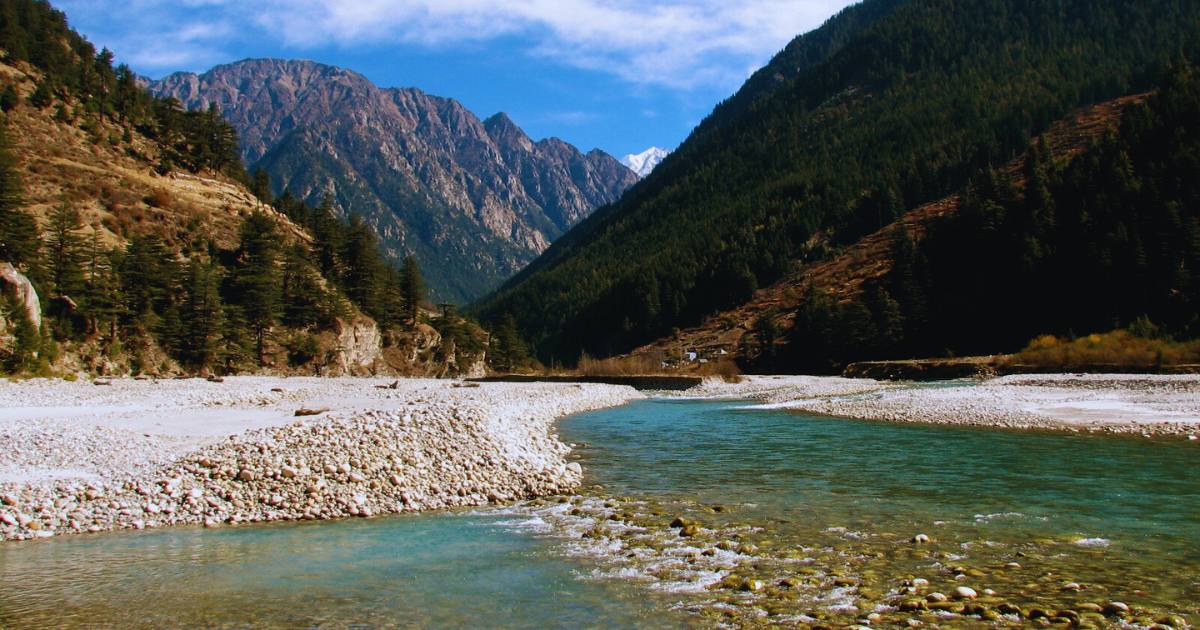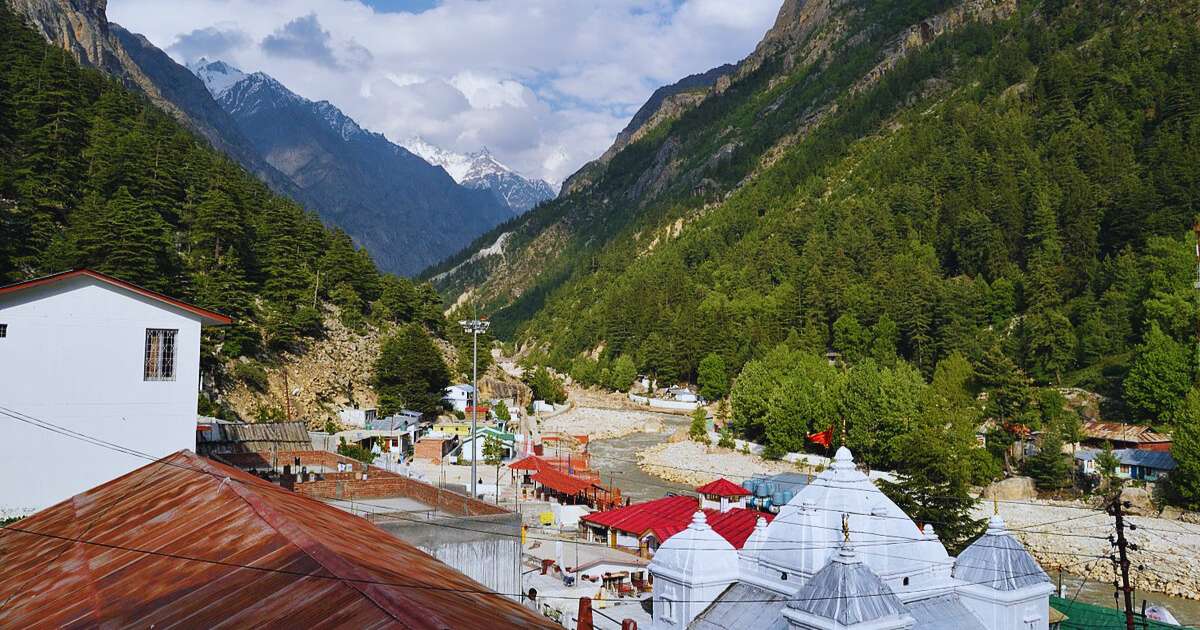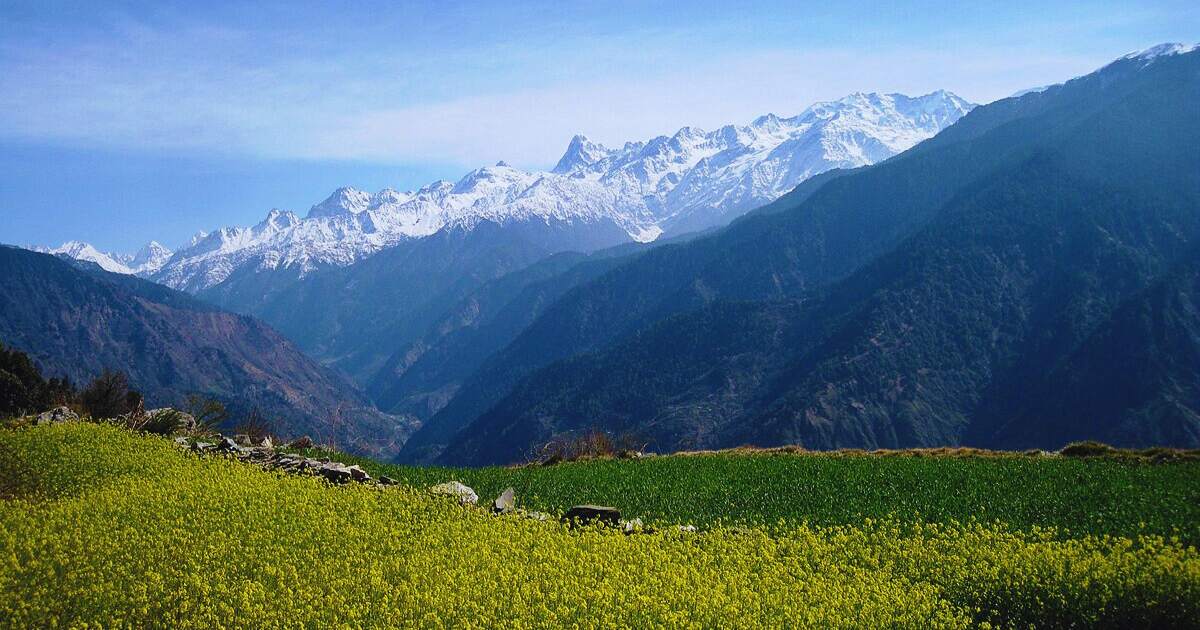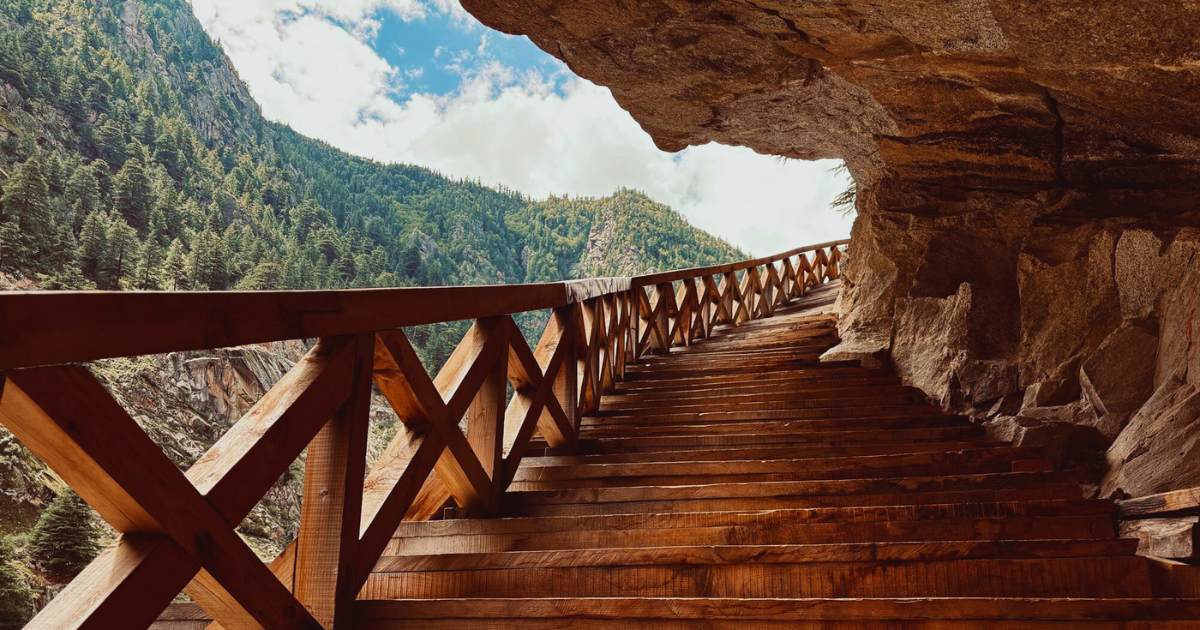Uttarkashi is known as the “Kashi of the North” (Uttrakashi). nestled in the lap of the serene Himalayas, Uttarkashi is not only a holy land for saints, It is also well-known for its serene surroundings, breathtaking natural beauty, and eco-friendly travel. Uttarkashi is the perfect destination for people who enjoy culture, the outdoors, and environmentally friendly, low-impact travel. So, let’s take a look at the top 7 eco-friendly travel destinations in Uttarkashi that you can visit at least once.
Top 7 Eco-Friendly Travel Destinations in Uttarkashi, Overview
The Top 7 Eco-Friendly Travel Destinations in Uttarkashi are a call to connect with nature, not just a list. Every location will teach you how to blend adventure and environmental preservation, whether you’re hiking to a mountain lake, staying the night in a peaceful village house, or crossing an ancient wooden bridge.
01.Harsil Valley

About 70 kilometers from Uttarkashi town, the charming Himalayan village of Harsil is located along the banks of the Bhagirathi River. It is mainly unexplored by commercial tourism, despite being well-known for its apple orchards, pine forests, and snow-capped peaks.
Why It’s Eco-Friendly
- Minimal tourist footprint.
- Homestays and eco-lodges support local livelihoods.
Best Time to Visit
April – June & September – November
Pro Tips
- Stay with local families in eco-homestays.
- Carry reusable water bottles and avoid plastic.
02.Dodital Lake

At 3,024 meters above sea level, Dodital is a high-altitude freshwater lake. Surrounded by oak and rhododendron forests, also it’s believed to be the birthplace of Lord Ganesha.
Why It’s Eco-Friendly
- Since only trekking is permitted, environmental damage is greatly reduced.
- No vehicle pollution.
- Local guides encourage sustainable trekking.
Best Time to Visit
May – October
Pro Tips
- Carry biodegradable toiletries.
- Trek with certified eco-guides.
Also Read:10 Interesting Facts About Valley of Flowers
03.Gangotri

Gangotri, one of the Char Dham’s, is a beautiful and spiritual place. It’s the origin point of the holy Ganges River and surrounded by the Gangotri Glacier and stunning Himalayan peaks.
Why It’s Eco-Friendly
- Controlled pilgrim access.
- Solar-powered guesthouses.
- Waste management initiatives have been taken to keep the temple premises clean.
Best Time to Visit
May – June & September – October
Pro Tips
- Use public transportation to reduce emissions.
- Support local food stores that use organic products.
04.Dayara Bugyal

With a total area of 28 square kilometers, Dayara Bugyal is one of India’s most beautiful mountainous regions. This place provides expansive views of the Himalayan peaks, including Bandarpoonch.
Why It’s Eco-Friendly
- No permanent structures.
- Only seasonal camps allowed.
- Eco-tourism promoted by forest department.
Best Time to Visit
May – July & September – December
Pro Tips
- Practice leave-no-trace principles.
- Carry back your trash.
Also Read:11 Adventure Activities in Nainital for Brave Souls
05.Nelang Valley
The Nelang Valley, which was once closed because of border tensions, is now open with permits. Like Ladakh, it offers dark landscapes that are untouched in their beauty and tranquility.
Why It’s Eco-Friendly
- Permit-based tourism limits over-tourism.
- No commercial hotels or resorts.
- Local shepherds act as guides.
Best Time to Visit
May-June & September-November
Pro Tips
- Respect local customs and restricted areas.
- Travel in small groups to reduce impact.
06.Barsu Village
The Dayara Bugyal trek starts from Barsu village, which itself is a hidden gem. This place surrounded by dense forests and high mountains and also give you a great experience of the simple village life.
Why It’s Eco-Friendly
- Encourages village-based tourism.
- Promotes organic farming and eco-stays.
- Uses natural resources sustainably.
Best Time to Visit
March – June & September – November
Pro Tips
- Experience organic farming with locals.
- Choose traditional foods instead of packaged products.
Also Read:8 Best Hill Stations in Uttarakhand for July
07.Gartang Gali

An ancient wooden bridge carved into a sheer cliff, Gartang Gali was once part of the Indo-Tibetan trade route. It was restored and reopened to tourists recently.
Why It’s Eco-Friendly
- Limited access helps preserve the site.
- The renovation was done using traditional construction techniques.
- Promotes heritage-based tourism.
Best Time to Visit
June – October
Pro Tips
- Visit during off-peak hours.
- Respect fragile wooden paths.
FAQs
1. Is Uttarkashi safe for solo eco-travelers?
Yes, Uttarkashi is considered safe. Choose homestays and registered guides for a secure experience.
2. Do I need special permits for places like Nelang Valley?
Yes, you need permits from local authorities, especially for restricted border areas like Nelang Valley.
3. Are these destinations accessible by public transport?
Most are reachable up to a point; last-mile access may require trekking or hiring local jeeps.
4. Can I do these trips in winter?
Some, like Dayara Bugyal and Harsil, are accessible in winter, but check weather conditions in advance.
5. How can I support local communities while traveling?
Stay in homestays, eat local food, hire local guides, and avoid plastic to support sustainable travel.
Hope you liked this article on Top 7 Eco-Friendly Travel Destinations in Uttarkashi. Do share your views with me within the comments section below. If this article was helpful, do share this post with your friends on Facebook and Twitter. It would mean a lot.
Hey there! I’m Santu Chakraborty and I’m not your typical traveler. By day, I wrangle circuits and solve electrical mysteries as an engineer, but my true passion lies in exploring the world and sharing those experiences with you. For the past five years, this blog has been my canvas, where I paint stories of adventure, practical travel tips, and cultural insights to ignite your wanderlust. So, come join me on my journeys and discover the magic that awaits just beyond the horizon!





